13 Nights / 14 Days
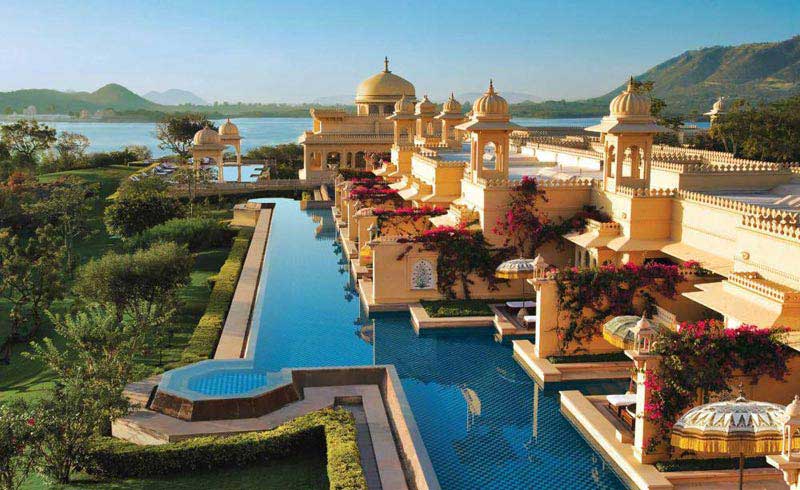
By Air (flight details to be advised)
9W representative will receive you on arrival at the Delhi airport and transfer to your hotel.
DELHI, India’s capital is a city built in layers. Over millennia, with the city as epicenter, great empires have risen and fallen, one built atop the remains of another. Consequently, countless ruins and monuments dot the city, each with a story to tell. Alongside, New Delhi’s wide multi-lane motorways, bustling with shopping malls, fast cars and steel and glass office complexes, belong unmistakably to the 21st century.
Overnight will be at Delhi.
Breakfast will be at hotel.
After breakfast, start a guided tour of Old Delhi.
The tour will begin with a visit to Raj Ghat, a simple memorial to Mahatma Gandhi. He is also famously known as the “father of the nation”.
One of the most important buildings of Old Delhi is the RED FORT. The magnificent Red Fort was built during the years 1638 – 48 when the Moghul Empire was at its peak. In 1638 Shahjahan transferred his capital from Agra to Delhi and laid the foundations of Shahjahanabad, the seventh city of Delhi. It is enclosed by a rubble stonewall, with bastions, gates and wickets at intervals. Of its fourteen gates, the important ones are the Mori, Lahori, Ajmeri, Turkman, Kashmiri and Delhi gates, some of which have already been demolished. His famous citadel, the Lal-Qila, or the Red Fort, lying at the town's northern end on the right bank or the Yamuna and south of Salimgarh, was begun in 1639 and completed after nine years. The Red Fort is different from the Agra fort and is better planned, because at its back lies the experience gained by Shahjahan at Agra, and because it was the work of one hand. It is an irregular octagon, with two long sides on the east and west, and with two main gates, one on the west and the other on the south, called Lahori and Delhi gates respectively. While the walls, gates and a few other structures in the fort are constructed of red sandstone, marble has been largely used in the palaces.
Continue your tour to Jama Masjid by bicycle rickshaws, one of Asia’s largest mosques. People stream in and out of the mosque continuously and the presence of a nearby bazaar means that the area is rarely quiet.
Enjoy the rickshaw ride at Old Delhi peddling through the narrow by lanes of Chandani Chowk.
After lunch proceed for a sightseeing tour of New Delhi, which reflects the legacy of the British left behind. The division between New and Old Delhi is the division between the capitals of the British and the Mughals respectively. The division in the walled city and New Delhi also marks the division in the life-styles. The walled city is all tradition where one will be able to glean a past life-style in all its facets, colors and spells. New Delhi in contrast, is a city trying to live up to the best of 21st century standards.
Imperial Delhi will include the Qutub Minar, the tallest stone tower in India. It is built in red and buff sandstone with a diameter of 14.32 m at the base and about 2.75 m on the top with a height of 72.5 m. Qutbu'd-Din Aibak laid the foundation of the tower in AD 1199 for the use of the mu'azzin (crier) to give calls for prayer and raised the first floor, to which were added three more floors by his successor and son-in-law, Shamsu'd-Din Iltutmish (AD 1211-36). All the tiers are surrounded by a projected balcony encircling the tower and supported by stone brackets, which are decorated with honeycomb design, more conspicuously in the first floor.
Next stop would be the majestic Humayun’s Tomb. Humayun died in 1556, and his widow Hamida Banu Begum, also known as Haji Begum, commenced the construction of his tomb in 1569, fourteen years after his death. It is the first distinct example of proper Mughal style, which was inspired by Persian architecture. It is well known that Humayun picked up the principles of Persian architecture during his exile, and he himself is likely to have planned the tomb, although there is no record to that effect.
The tour also includes a drive past the imposing India Gate, the Parliament building and the Rastrapathi Bhawan, the President’s residence. Overnight will be at Delhi.
Breakfast will be at hotel.
After having breakfast, visit GURDWARA BANGLA SAHIB.
Gurudwara Bangla Sahib: It is an iconic Sikh Temple situated near Connaught Place and one of the most prominent Sikh Gurdwaras, or Sikh house of worship, in Delhi, India and known for its association with the eighth Sikh Guru, Guru Har Krishan, as well as the pool inside its complex, known as the "Sarovar." Take a walking tour of the complex and take part in service at the community kitchen (LANGAR). People from all walks of life irrespective of religion are fed everyday by the kitchen.
Later, visit the Lotus temple located in south of Delhi. It is lotus shaped and has rightly been given the name. It is made of marble, cement, dolomite and sand. It is open to all faiths and is an ideal place for meditation and obtaining peace and tranquility. Its founder, Bahaullah (1817-1892), is regarded by Bahai as the most recent in the line of Messengers of God that stretches back beyond recorded time and that includes Abraham, Moses, Buddha, Zoroaster, Christ and Muhammad.
Proceed towards Indira Gandhi Museum. The history of the Gandhi family is well documented in this old building which was the last residence of Mrs. Gandhi.
Afterwards, visit AKSHARDHAM temple. This is an architectural wonder and that too modern art.
Akshardham means the eternal, divine abode of the supreme God, the abode of eternal values and virtues of Akshar as defined in the Vedas and Upanishads where divine bhakti, purity and peace forever pervade. Swami Narayan Akshardham in New Delhi epitomizes 10,000 years of Indian culture in all its breathtaking grandeur, beauty, wisdom and bliss. This amazing structure comprises of 20,000 statues, floral motifs and exquisite carved pillars made of stones. This is one of the best modern day temples to experience the ultimate temple culture.
Overnight will be at Delhi.
By Road 240kms 4.5hrs
Breakfast will be at hotel.
After having breakfast, drive towards Agra.
AGRA: Two great Mughal monarchs, Akbar and Shah Jahan, transformed the little village of Agra into a befitting second capital of the Mughal Empire - giving it the name Dar-ul-Khilafat {seat of the Emperor}. Today a visitor to Agra is caught up in a world of contrasting edifices, of red sandstone and white marble, narrow galleys and quaint buggies, and that irresistible charm that this favorite city of the Mughals still retains. It is not surprising, that modern Agra still reflects its Mughal heritage most conspicuously.
En route visit BABY TAJ or the ITMAD-UD-ULLAH – The interiors of which are considered better than the Taj. Nur Jahan, the Empress of Jahangir for her father in 1628, built one of the most beautiful Mughal tombs, Itmad-Ud-Daulah’s Tomb. The tomb is a resting place of the powerful personality in Mughal Court, Itmad-Ud-Daulah, whose life is very interesting. Formerly a very poor Persian merchant then named Mirza Ghiyas or Ghiyas Beg he became a minister and a trusted treasure in Akbar's court. After Akbar's death in 1605, his son Jahangir rose into power. Jahangir made Ghiyas Beg his chief minister and honored him with the title of Itmad-Ud-Daulah, the Pillar of State. Later, Jahangir met a beautiful daughter of Ghiyas Beg named Mehr-Un-Nissa and married her. Mehr-Un-Nissa soon played a significant role in the Jahangir's court and was called Nur Mahal, the light of the Place. Owing to her influence, her father and brother were granted with privileges in the court. When Ghiyas beg (Itmad-Un-Daulah) dies in 1622, Nur Mahal decided to build a mausoleum for him. Queen Mumtaz Mahal or the lady of the Taj was also from this prevailing family. The mausoleum is entirely made of white marble and graced with intricate decoration of inlay work, and marble-screen work belonging to the Islamic style. With its tranquil, small garden on the bank of Yamuna River, the tomb stands impressively elegant from a distance.
Reach and check into your hotel.
Proceed for a HERITAGE WALK to the other side of River YAMUNA with your guide in the evening.
The other side of the TAJ MAHAL across the river Yamuna where Mughal History has been written in edicts of stone, the river Yamuna lined with the residences of mobility was the artery, the very lifeline, which fostered the development of Mughal Agra. These heritage relics have been weaved together for a historic experience of Mughal Agra. You would walk through the various monuments in midst of rural setting intertwined with the communities along with stunning view of the TAJ MAHAL.
Overnight will be at hotel.
Wake up early and proceed for a sunrise visit of Taj Mahal.
TAJ MAHAL – Little needs to be said about this architectural wonder which is always the soul raison-de-etre for every tourist's visit to Agra. Built by Shah Jahan, the Taj is a white marble memorial to his beautiful wife Mumtaz Mahal. This monument took 22 years to be completed and was designed, and planned by Persian architect Ustad Isa. Apart from its stunning design balance and perfect symmetry, the Taj is also noted particularly for its elegant domes, intricately carved screens and some of the best inlay work ever seen.
Return back and enjoy the breakfast.
Later proceed for the sightseeing of Agra fort and Sikandra.
AGRA FORT – The red sandstone structure is surrounded by chahar-bagh, a foursquare formal garden. Built by the famed Mughal emperor Akbar in 1565 AD, the fort is predominantly of red sandstone. Ensconced within is the picture perfect Pearl Mosque, which is a major tourist attraction. It lies on the bend of the river Yamuna, almost in the heart of the town. Akbar built it as his citadel over the years 1563-73 in the finest architectural style. It has imposing gates and walls of red sandstone and a moat.
SIKANDRA – This beautifully maintained monument is where EMPEROR AKBAR was buried. It is a very low profile monument but it has one of the most awe – inspiring tombs. It is surreal how one of the greatest emperors has been put to rest. The manicured lawns has spotted and other varieties of deer roaming in them. Named after the Afghan ruler Sikander Lodi, Sikandra is the final resting place of Emperor Akbar. The Emperor began the construction of his own garden mausoleum during his lifetime. However, his son Jahangir completed the construction in 1613. An impressive marble – inlaid gateway leads to the spacious four - tiered monument that is crowned by a white marble cenotaph and screen. What is interesting is that the structure imbibes the best of Hindu, Christian, Islamic, Buddhist, Jain motifs, signifying the new religion started by Akbar – the DEEN E ILAHI.
Overnight will be at Agra.
By Road 60kms in 1.5hrs
Bharatpur – Ranthambore:
By Deluxe Train
After having breakfast, drive towards Bharatpur.
After having breakfast, drive towards Fatehpur Sikri for sightseeing.
Fatehpur Sikri is 37 km west of Agra. Jajal-ud-din-Muhammad Akbar, Humanyun's son, accessed the throne at the tender age of 14. While hunting around Sikri his curiosity was aroused by the songs of some minstrels about the celebrated Khwaja -Mu'inu'd-din Chisti, the founder of the Chisti order of SUFIS. Akbar (who did not have a male heir) heard about Saint Salim Chisti and visited him in the year 1568. The saint blessed him with 3 sons and in gratitude Akbar ordered the great mosque of Fatehpur Sikri built under his supervision. As a mark of respect to the saint, Akbar shifted his capital to Fatehpur Sikri and built various secular buildings like the Diwan-I-Am, Diwan-I-Khas, Jodhabai palace, Birbal's house, Marian's house and the Panchmahal.
As per your train timing, you will be transferred to railway station for your train to Ranthambore.
Ranthambore Tiger Reserve, at the junction of the Aravalis and the Vindhyas, is a unique example of natural and historical richness, standing out conspicuously in the vast, arid and denuded tract of eastern Rajasthan, barely 14 kilometers from Sawai Madhopur. Get in tune with nature for a luxury holiday in the heart of the jungle. Most of the resorts are close to the National Park Gate, Tiger Den being the closest.
It spreads over a highly undulating topography varying from gentle to steep slopes; from flat-topped hills of the Vindhyas to the conical hillocks and sharp It spreads over a highly undulating topography varying from gentle to steep slopes; from flat-topped hills of the Vindhyas to the conical hillocks and sharp ridges of the Aravalis, from wide and flat valleys to narrow rocky gorges. An important geological feature the ‘Great Boundary Fault’ where the Vindhya plateaus meet the Aravali Hill range meanders through the Reserve. The rivers Chambal in the south and Banas in the north bind the National Park.
Tiger, at the apex of the food chain, lord over the kingdom in a subtle way. Solitary by nature, it operates in stealth. Therefore tiger sightings, frequent as they are, are always a matter of chance. However, even evidences of tiger's activities are very exciting.
Our representative will meet you on arrival at station and transfer to your hotel. Relax.
Overnight will be at Ranthambore.
Wake up early morning and leave for your safari into the National Park. Track the tigers and other wildlife through the morning. Return to the resort / lodge by 1000 in the morning and have breakfast.
Freshen up and spend time at the pool or visit the town. You could also go for a nice visit to the temple on top of the fort.
In the afternoon have lunch and then leave again for you afternoon safari. The safari will be till evening 1700 – 1800hrs and then return to the resort / lodge.
Dinner will be at the resort and retire early for the night.
Overnight will be at Ranthambore
By Road 175kms in 4hrs
Enjoy early morning game drive.
Return to your hotel and enjoy your breakfast.
Later, proceed for a beautiful Pink City – Jaipur.
Jaipur is the capital of the state of Rajasthan a romantic realm of resplendent palaces, mighty fortresses and regal Maharajahs that lies in the western deserts and is an utterly unique part of India. Proudly belonging to the KSHATRIYA warrior caste and fiercely independent, the Rajput princes made fearsome foes. However, many of them realized that to maintain their wealth and authority locally, it was expedient to proclaim allegiance to the central power. Thus, many enjoyed a privileged position under the Mughal emperors and also the British Raj that followed.
The bustling Rajasthan capital of Jaipur takes its name from its venerated founder Jai Singh II, who was given the title Sawai Maharaja by the Mughal. Literally translated this would mean ’one and a quarter’, suggesting that the Mughal thought this emperor to be more valuable than just ‘one’. Jaipur is known as the ’Pink City’ on account of the distinctive colour of its buildings. This did not, however, form part of the original plan, but dates back to 1856, when the city was given a wash of pink in honor of a State Visit from Prince Albert.
Reach and check in at hotel.
In the evening, you will visit Birla Temple to learn more about the fascinating religious life of Jaipur. The marble structure, built as recently as 1985, houses ornate statues including one of Lakshmi (goddess of Wealth and Beauty) and Narayan dressed in gaudy robes, representing a Hindu vision of heavenly luxury. Carvings in the temple and on pillars supporting the covered walkways include images of the Hindu pantheon, as well as Jesus, the Blessed Virgin Mary and St Francis of Assisi. Your visit will coincide with the AARTI Ceremony, which involves oil lamps being lit and waved, in order to awake and invoke the deity.
Enjoy the experience and spend night at Jaipur.
Breakfast will be at hotel.
After having breakfast, proceed for a morning excursion to the Amber Fort. Enjoy the fort ascent on elephant back in a royal manner.
AMBER FORT PALACE – Amber is the classic romantic Rajasthani fort palace. Its construction was started by Man Singh I in 1592, and completed by his descendent Jai Singh I. Its forbidding exterior belies an inner paradise where a beautiful fusion of Mughal and Hindu styles finds its ultimate expression.
CITY PALACE – A delightful blend of Mughal and traditional Rajasthani architecture, the City Palace sprawls over one-seventh of the area in the walled city. It houses the Chandra Mahal, Shri Govind Dev Temple and the City Palace Museum.
JANTAR MANTAR – The largest and the best preserved of the five observatories built by Jai Singh II in different parts of the country. This observatory consisting of outsized astronomical instruments is still in use.
HAWA MAHAL – The ornamental facade of this "Palace of Winds" is a prominent landmark in Jaipur. It is a five-tier structure of sandstone- plastered pink encrusted with fine trelliswork and elaborated balconies. The palace has 953 niches and windows. Built in 1799 by Pratap Singh, the Mahal was a royal grandstand for the palace women.
Enjoy shopping around local market in the evening.
Overnight will be at Jaipur.
By Road 350kms in 6hrs
After having breakfast, drive for Jodhpur en-route visiting Pushkar.
Amongst the grandeur of Rajasthan, discover a unique gem - Pushkar. Lord Brahma - The creator of the world in a search for his abode on earth, performed the supremely spiritual VEDIC YAGNA at Pushkar. It is thus the site of the only Brahma Temple in the world. The place is a mellow, serene and bewitching little town which attracts those in search of some respite from the tumult of India. Pushkar is right on the edge of the desert and is only 11 km from Ajmer but separated from it by Nag Pahar – the snake mountain.
The town clings to the side of the small Pushkar Lake with its many bathing ghats and temples. For Hindus, Puhskar is a very important pilgrimage centre and you'll see plenty of Sadhus (individuals on a spiritual search).
Pushkar boasts temples, though few are as ancient as you might expect at such an important pilgrimage site, since many were deserted by Aurangzeb and subsequently rebuilt. The most famous is the Brahma Temple, said to be one of the few temples in the world dedicated to this deity. It's marked by red spire, and over the entrance gateway is the hans, or goose symbol, of Brahma, who is said to have personally chosen Pushkar as its site.
Blessed with cultural blends, it is the venue for the famous Pushkar Fair, with people coming from all over Asia to buy and sell cattle of breeds from across the world. A city of Pilgrimage from time immemorial with over 500 temples and Ghats Pushkar begets a legacy of timeless architectural heritage. Pushkar radiates an ambience of peace and spirituality that casts a lure to visit again and again. The Pushkar fair is amongst the largest cattle fairs in the world and amongst the oldest cities in India, with references in mythology and the Mahabharat.
There are 52 bathing Ghats, which are linked to the lunar calendar, enclose the lake. Each Ghat has its own miraculous qualities and powers of healing and this city of temples has over 500 temples built over different eras with varied architectural styles. It is also often referred to as the rose garden of Rajasthan - the essence of the famous Pushkar rose is exported the world over.
Enjoy a short camel ride in Pushkar.
Later, drive towards Jodhpur after enjoying camel ride.
Set at the edge of the Thar Desert, the imperial city of Jodhpur echoes with tales of antiquity in the emptiness of the desert. Once the capital of the Marwar state, it was founded in 1459 AD by Rao Jodha-chief of the RATHORE clan of Rajputs who claimed to be descendants of Rama - the epic hero of the RAOCTOBERANA. It is also referred as the Blue City, due to the indigo tinge of the whitewashed houses around the Mehrangarh Fort (the old city). The blue houses were originally for Brahmins but non-Brahmins soon joined in, as the color was said to deflect the heat and keep mosquitoes away. Jodhpur lies near the geographic center of Rajasthan state, which makes it a convenient base for travel in a region much frequented by tourists. The old city of Jodhpur is surrounded by a thick stone wall. The wall has six huge gates called Nagauri gate, Merati gate, Sojati gate, Jalori gate, Siwanchi gate and Chand pool.
Reach Jodhpur and check into your hotel. Relax.
Overnight will be at hotel.
Breakfast will be at hotel.
After breakfast visit the Mehrangarh Fort.
Mehrangarh Fort: Situated on a steep hill, Mehrangarh fort is one of the largest forts in India. The beauty and the grandeur of numerous palaces in the fort narrate a saga of hard sandstones yielding to the chisels of skilled Jodhpuri sculptures. Mehrangarh Fort, spreading over 5 km on a perpendicular hill and looking down 125 meters, presents a majestic view on city horizon. It was built on advice of a saint in 1459 to establish an impregnable head-quarter. This Fort is one of the best in India with its exquisitely latticed windows, carved panels, elaborately adorned windows and walls of Moti Mahal, Phool Mahal, and Sheesh Mahal. A collection of musical instruments, palanquins, royal costumes, furniture and the cannons on the fort's ramparts are well preserved.
Jaswant Thada: Close to the fort complex, lays Jaswant Thada. This 19th century royal cenotaph built in white marble in commemoration of Maharaja Jaswant Singh II and three other cenotaphs stand nearby. The cenotaph of Maharaja Jaswant Singh holds the rare portraits of the rulers and Maharajas of Jodhpur. A visit inside the cenotaphs, with some villagers of the region, would bring forward the reverence they still hold for their brave kings.
Proceed to an off-road point to start your ‘Day Drive Desert Safari Experience’ where you are engaged in an off-road adventure through the semi-arid desert of Rajasthan and have a rare glimpse into the rich culture and true essence of India.
A complete off-road desert driving experience in 4 x 4 vehicles through the road less travelled in Rajasthan while enjoying the unadulterated view. It unique, exciting, relatively unchartered, filled with the natural beauty of the rugged desert landscape and surprises you with the experiences of the simplistic purity of rural life. From the thrills of dune driving, and the adrenaline rush of negotiating the rough terrain of a river bed, to visiting different rural communities and experiencing a glimpse of their simple yet dignified lifestyle and from viewing the large variety of wildlife, this experience is guaranteed to leave you wanting more!
You traverse the countryside through dirt tracks, camel tracks, dry riverbeds and sometimes even create your own tracks. En route exciting drive, you arrive at the hutments and villages of the local communities, visit their homes and witness simple and colourful lifestyle. Enjoy interactive experience with locals while an expert explains their customs and culture to you and how they have always lived in complete harmony with nature. En route, you also get the opportunity to see the wildlife that is abundant in this area like the black buck, chinkara, neel gai, wild boar, desert fox and a large variety of bird life, migratory and indigenous.
Drop off to your hotel before sunset.
Overnight will be at Jodhpur.
By Road 270kms in 5hr
Breakfast will be at hotel.
After having breakfast, drive towards Udaipur enroute visit Kumbhalgarh.
Cradled in the cluster of thirteen mountain peaks of the Aravalli ranges, the formidable medieval citadel- Kumbalgarh stands a wary sentinel to the past glory. Rising from a prominent ridge, 1914 metres high from the sea level, the fort was built in 15th century AD by Maharana Kumbha (1419-63 AD) and is the principal fortification after Chittaurgarh, lying 90 km north-west of Udaipur.
The massive fort, en9Wed by a 36-km long wall, has seven majestic gates and seven ramparts, one within the other. Rounded bastions and high watchtowers strengthen the crenellated walls of the fort making it an impregnable structure.
Generally, it is perceived that Kumbhalgarh (also written as Kumbhalgadh) is a virtually inaccessible 15th century fort. Many of the travelers who visit Kumbhalgarh have this notion itched overwhelmingly in their mind and they expect an abandoned medieval structure. Fortunately this is not the case and you can find Kumbhalgarh as the hub of delighted activities within easy reach, yet off the beaten track, from well-known destinations.
The town is most famous for the stunning Dilwara Jain temples, built between the 11th and 13th century. These intricately carved marble temples are amazing to behold-not an inch of space has been left uncarved; almost, as if, in a frenzy of inspiration, the artists carved and carved till they could carve no more! Mount Abu also has a pretty lake studded with little islets.
Kumbhalgarh Fort: Though little known, Kumbhalgarh has one of the finest examples of defensive fortifications in entire Rajasthan. Total length of the wall of this fort is 32 kilometers and there are excellent views from the top of the walls. Kumbhalgarh stands on the site of an ancient citadel dating back to the second century A.D., belonging to a Jain descendant of India's Mauryan emperors. Its steel gray ramparts encircle the fertile Shero Mallah Valley, with ancient monuments cenotaphs, ponds, and flourishing farms. In addition, a stroll along the walls of the fort gives great panoramic views.
Continue driving towards Udaipur. Reach and check into hotel.
Reach Udaipur and check – in at hotel. Relax.
The city of Dawn, Udaipur is a lovely land around the azure lake, hemmed in by the lush hills of the ARAVALLIS. A vision in white drenched in romance and beauty, Udaipur is a fascinating blend of sights, sound and experiences and inspiration for the imagination of poets, painters and writers.
Its kaleidoscope of fairy-tale palaces, lakes, temples, gardens and narrow lanes strewn with stalls, carry the flavor of a heroic past, epitomizing valor and chivalry. Their reflection in the placid waters of the LAKE PICHOLA is an enticing sight.
Udaipur is the jewel of MEWAR – a kingdom ruled by the Sisodia dynasty for 1200 Years.
Overnight will be in Udaipur.
Breakfast will be at hotel.
Proceed for sightseeing tour of Udaipur, stopping first at City Palace.
City Palace: Standing on the east bank of Lake Pichola, is a massive series of palaces built at different times from 1559 A.D. The balconies of the palace provide panoramic views of "Jag Niwas" (the world wide famous Lake palace hotel), Jag Mandir on one side and on the other the city of Udaipur. Its main entrance is through the triple-arched gate - the Tripolia, built in 1725. The way now leads to a series of courtyards, overlapping parations, terraces, corridors and gardens - a harmonic profusion hard to describe. There is a Suraj Gokhda, where the maharanas of Mewar presented themselves in the times of trouble to the people to restore confidence. The Mor-chowk (Peacock courtyard), gets its name from the vivid mosaics in glass decorating its walls. The chini chitrashala is noteworthy while a series of wall paintings of KRISHNA are on display in Bhim Vilas. There are numerous other palaces such as Dilkhush Mahal, Sheesh Mahal, Moti Mahal and Krishna villas - in memory of a princess of striking beauty who poisoned herself to avert a bloody battle for her hand by rival princess. Now the palace contains many antique articles, paintings, decorative furniture and utensils and attracts thousands of visitors every day.
Here you will marvel at rooms with mirrored walls and ivory doors, colored glass windows and inlaid marble balconies and the Peacock Courtyard.
Saheliyon Ki Bari: Maharana Sangram singh builds this in the mid-18th century. The 'garden of the maidens' brings to mind the lifestyle of the ladies of the court. The delightful gardens appear discreet and in impeccable taste. There are four pools with dainty kiosks, and all around are flowerbeds, lawns, pools and fountains protected by a series of walls and shady trees. The Foundation of the Sahelion Ki Bari functions solely by water pressure and no pumps are used. The garden has a lotus pool, a sitting room decorated with paintings and glass mosaics. The whole ambiences are flavored by the nostalgia of those beautiful bells enjoying themselves in a lavish aura.
Bagore Ki Haveli: This is a very congenial old building built right on the waterfront of Lake Pichola at Gangori Ghat. Amir Chand Badwa, the Prime Minister of Mewar built it in the eighteenth century. The palace has over hundred rooms and some very interesting display of costumes and modern art. The glass and mirror in the interiors of the Haveli delicate work and well preserved too. It also preserves a fine example of Mewar Painting on the walls of Queen's Chamber. The two peacocks made from small pieces of colored glasses are fine examples of glasswork. After the death Badwa the building became the property of Mewar State. It came to be occupied by Maharana Shakti Singh of Bagore who built the palace of the three arches also in 1878 and it acquired its name of Bagore-Ki Haveli, the house of Bagore. After independence the structure lay in neglect until 1986 when it housed the West Zone Cultural centre.
Jagdish Temple: The temple is situated in the middle of the city. The temple of Jagannath Rai, now called Jagdish-ji, is a major monument and should be seen carefully. Raised on a tall terrace and completed in 1651, it is a tribute alike to the tenacity of its builders and the resilience of the art tradition it represents. It attaches a double tiered Mandapa (hall) to a double - storied, saandhara (that having a covered ambulatory) sanctum. The mandapa has another level tucked within its pyramidal samavarna (bell - roof) while the hollow clustered spire over the sanctum contains two more, non - functional stories. Lanes taking off from many of the sheharpanah (city wall) converge on the Jagdish Temple and walking leisurely through them brings you face with the many layers of the cultural palimpsest that Udaipur is. Maharana Jagat Singh 1st built it in 1651 A.D.
Proceed for Evening Motor launch cruise on the placid waters of Lake Pichola. From the boat you will be able to view the city of Udaipur as it rises majestically above the lake in the middle of the Rajasthan desert. Also visit the Jag Mandir Palace - the other island palace in the middle of the lake. Spend some time at the Jag Mandir Palace.
Overnight will be at Udaipur.
By Air
International departure from Delhi: By Air
Breakfast will be at hotel.
As per your flight timing, you will be transferred to airport for your flight to Delhi. Connect to your international onward flight with sweet memories of your North India tour.
9W Special Privileges:
NOTE:
9W Hospitality Pvt. Ltd. is the vision of highly passionate hospitality professionals, led by a team of skilled financial analysts, tour operators and experienced hoteliers. We own and operate our own restaurants pan India, own and run franchise for popular brands. With years of research, strategic analysis and looking in the future of inbound tourism in our country, we expanded our business to offer services as a destination management company. Due to detailed foreign market research, closely monitoring needs of foreign travelers, identifying international markets, we successfully managed to build a loyal customer base in the span of a few years. Read More...

 3D/2N
3D/2N
 6D/5N
6D/5N
 5D/4N
5D/4N
 4D/3N
4D/3N
 4D/3N
4D/3N
 4D/3N
4D/3N
 4D/3N
4D/3N
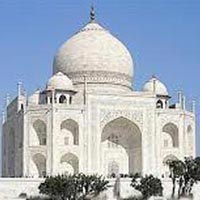 7D/6N
7D/6N
 7D/6N
7D/6N
 14D/13N
14D/13N
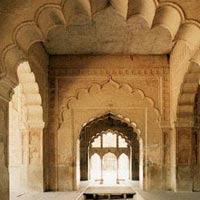 14D/13N
14D/13N
Rajasthan - Land of Kings & Queens Tour
New Delhi - Agra - Jaipur - Ranthambore - Udaipur - Jodhpur - Bundi - Chittorgarh -..
 14D/13N
14D/13N
 14D/13N
14D/13N
New Delhi - Agra - Gwalior - Bhopal - Indore - Mumbai - Chhatarpur - Tikamgarh - Au..
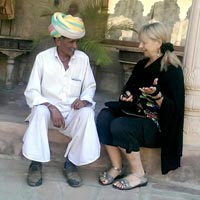 14D/13N
14D/13N
New Delhi - Mandawa - Bikaner - Gajner - Jodhpur - Kumbhalgarh - Chittorgarh - Bund..
 14D/13N
14D/13N
Guwahati - Shillong - Tawang - Kaziranga - Kohima - Imphal - Silchar - Cherrapunji ..
 14D/13N
14D/13N
Munnar - Thekkady - Alleppey - Thiruvananthapuram - Kovalam - Kanyakumari - Kochi
 14D/13N
14D/13N
New Delhi - Shimla - Dharamshala - Dalhousie - Chandigarh City
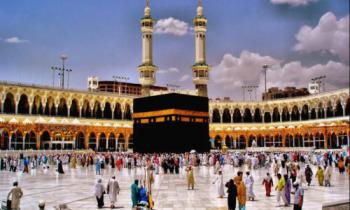 14D/13N
14D/13N
 13D/12N
13D/12N
Rajasthan Tour Package 12 Night - 13 Days
Ajmer - Bikaner - Jaipur - Jaisalmer - Jodhpur - Mount Abu - Pushkar - Udaipur
 13D/12N
13D/12N
12 Nights Rajasthan Package From Jaipur
Ajmer - Bikaner - Jaipur - Jaisalmer - Jodhpur - Mount Abu - Pushkar - Udaipur
 13D/12N
13D/12N
Rajasthan Tour Package 12 Night - 13 Days
Ajmer - Bikaner - Jaipur - Jaisalmer - Jodhpur - Mount Abu - Pushkar - Udaipur
 12D/11N
12D/11N
11 Nights 12 Days - Delhi Agra Rajasthan
New Delhi - Mathura - Agra - Jaipur - Ajmer - Pushkar - Udaipur - Mount Abu - Ranak..
 11D/10N
11D/10N
10 Nights Uttar Pradesh Tour Package Fro..
New Delhi - Agra - Prayagraj - Lucknow - Mathura - Varanasi - Ayodhya - Vrindavan -..
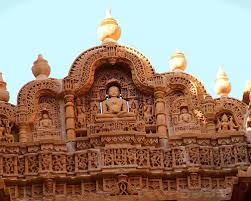 10D/9N
10D/9N
9 Night - 10 Days Rajasthan Tour Package
Ajmer - Jaipur - Jaisalmer - Jodhpur - Mount Abu - Udaipur
 10D/9N
10D/9N
Ajmer - Udaipur - Mount Abu - Jodhpur - ..
Ajmer - Jaisalmer - Jodhpur - Mount Abu - Udaipur - Jaipur
 9D/8N
9D/8N
9 Days Jaipur - Ajmer - Udaipur - Mount ..
Ajmer - Jaipur - Jaisalmer - Jodhpur - Mount Abu - Udaipur
 4D/3N
4D/3N